“People who come here love the same things I love.” Dr. Niwat Tantayanusorn sits across from me in a shady spot outside his house, ferns hanging near his shoulders and a warm cup of tea being cradled in his palms. “Culture, and nature.”
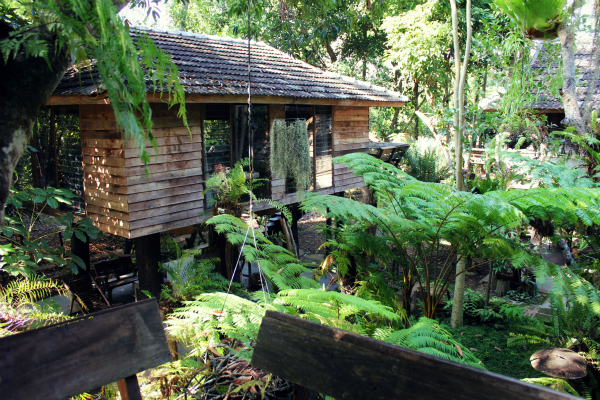
I’m sitting with the owner and architect of Fern Paradise in Sansai, a short drive away from Chiang Mai’s city centre. The resort is made up of rice barns transformed into luxurious rooms, nestled in between endless trees and jungle plants. I’ve just spent the night winding down to the point of nap-walking, and I rise for breakfast near the calm river. We are greeted by croissants, rich coffee and fresh fruit, and a warm smile from Niwat. He casually sits down at our table, and says, “There is an Indian gentleman who has travelled from Bombay to see my fern collection. I would like you to meet him later.”
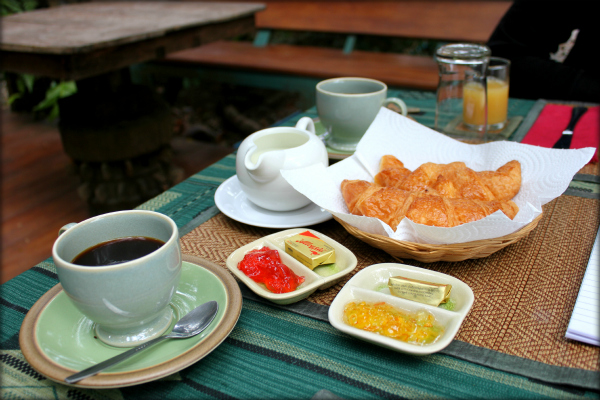
At first, I’m confused – why do I need to meet this man? But during the conversation that follows, it dawns on me that Niwat’s passions in life are overgrown with ferns. He speaks of them as things of immense beauty and fascination, and jokes that his 10,000 ferns in the resort barely make up 400 of the 12,000 species that currently exist. This is the hard work of a fern collector during the 12 years he has spent searching for spores all over the world. He has ferns in his collection from as far as Madagascar and South Africa, and as close as the Philippines, Indonesia, Malaysia, and Vietnam.
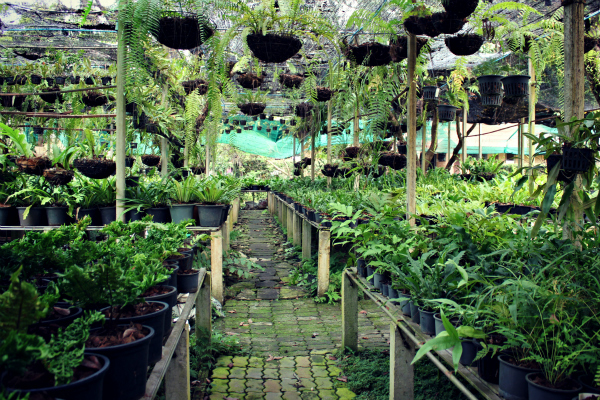
The light conversation then turns to environmental issues, globally and in Thailand, and his passion for nature becomes even more apparent. “My relationship with the environment goes very deep,” says Niwat. “Deforestation is such a big problem. We’ve reduced the ability of the world’s forests to absorb carbon dioxide. So to me, it’s clear we need more forests. What’s happening to our world? People don’t understand how important nature is to humans.”
He gestures at the buildings around us, and points at the trees. They have been free to grow as they please, their branches crawling up the side of the rice barns, their tendrils hanging down over our heads. It just made sense to Niwat to build around them, instead of destroying them, and now they are one of the main appeals of his resort.
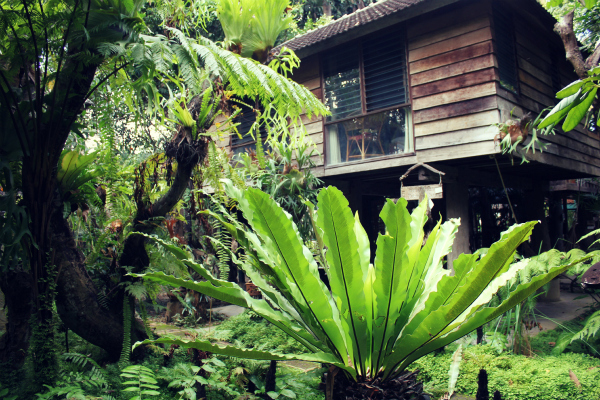
“There are many environmental problems, but as an individual, my solution is to plant trees. Every generation destroys more trees, and more carbon dioxide is released into the atmosphere. So now we have melting ice and increasing sea levels, and places which were cold now becoming hot. Natural resources are diminishing while natural disasters are increasing. And it’s all because of human greed.”
He takes a moment to congratulate his grandson, who has just excitedly run over, displaying his wobbly tooth. Then he seems to muse out loud, “I’m not sure my grandson would have the chance to experience nature like this if I didn’t have this place. The future will be very different, I think.”
I tell Niwat how comfortable I feel at Fern Paradise; how being surrounded by all the lush greenery gives me a sense of wellbeing and calm. He smiles. “That’s why people like it here. Look at us sitting amongst the trees. They are our friends, giving us shelter and oxygen. That’s why humans feel so comfortable in nature.”
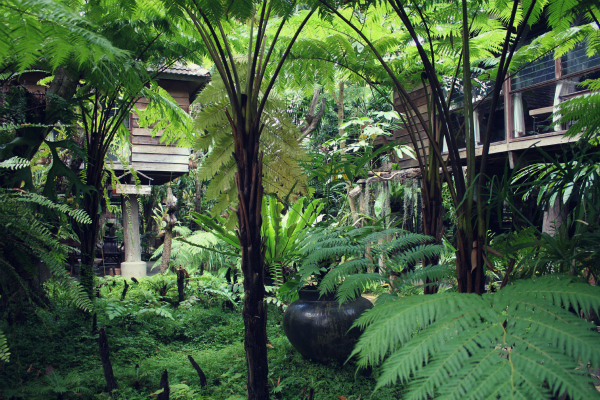
We touch on his background, which includes a BA in Architecture, a Masters in Environmental Management, and a PhD in Urban Planning, which, he points out, are all related to nature and humans. He is also the voluntary President of the Natural Resources & Environmental Working Group in Bangkok, where he says his most important duty is to recommend better policies to the government. He shakes his head as he talks about the dreaded smog that blankets Chiang Mai every year, and similar pollution problems in Myanmar, Malaysia, Indonesia and other countries. He also tells me about the coastline of Thailand being damaged by erosion, caused by global warming and human interference with our oceans.
“I am lucky to have travelled almost everywhere in the world,” says Niwat. “But visiting places in Thailand makes me very sad. The destruction I see here is caused by the human hand.”
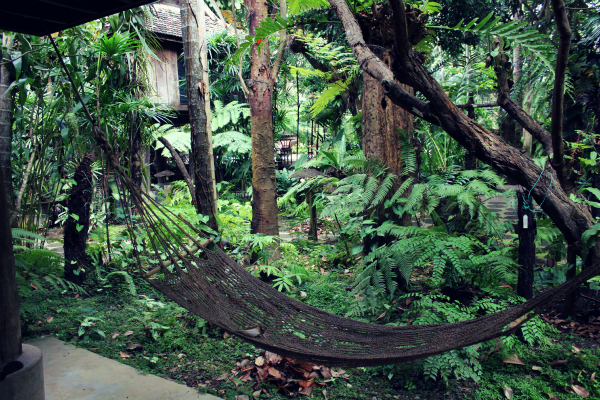
Having just spent the night in an old rice barn, converted into a bedroom which feels rustic and luxurious in turns, I wonder how Niwat has managed to preserve his culture in these modern times. “As an architect, you have to respect the local wisdom and history, or else you will destroy it,” he tells me. “When I was young, my first idea was to make a rice museum using the old rice barns on this property. I wanted people to be able to learn about rice culture in Thailand, which is also a part of Lanna culture. In the end, I didn’t make the rice museum, because it wouldn’t have brought in any money for my family. Then I had a new idea: transform the old rice barns into bedrooms, and make my property a resort. This way people can still enjoy my culture, and I can make a living.”
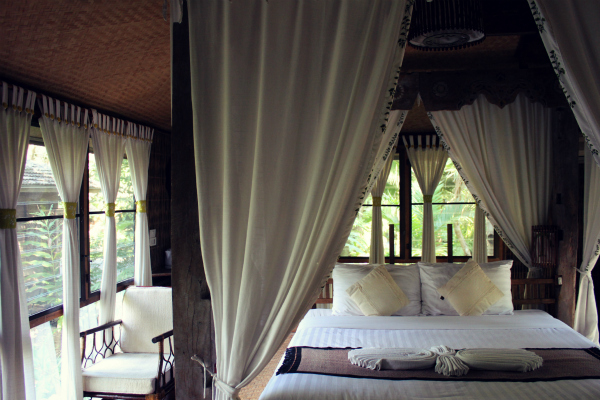
After our interview, he takes us on a tour of Fern Paradise, which he opened 7 years ago on his 21 rai piece of land. It becomes even more obvious that all the original plants and trees have remained untouched, brilliant and blooming everywhere I look (such an unfamiliar sight for a city-dweller like me). Many members of Niwat’s family still live on the property, along with the staff and helpers who stay in their own private houses.
“My father-in-law loved fruit – that’s why you see many fruit trees here,” notes Niwat, looking up at the large jackfruit tree that looms over us. “When I first moved to this land, I never cut anything down out of respect for my father-in-law. Now, I grow new trees and ferns all the time.”
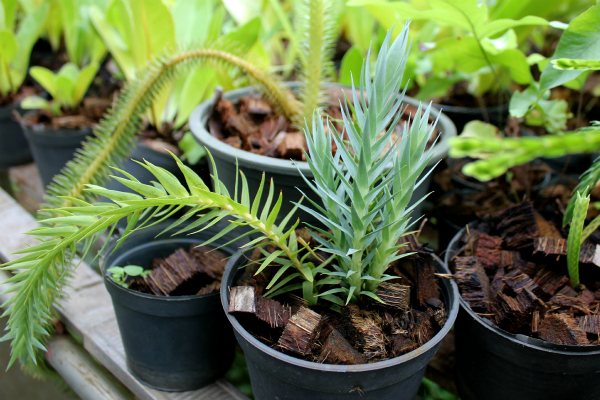
He leads us to a 60-year-old house hidden away behind a jungle-like array of flora, where he has kept all his family’s relics, like old Phillips radios and rusty bicycles. It feels like a museum that has been lived in, and while we tentatively place our feet on the teak floorboards, he chats away about fond memories from the past: “Here is a photo of my wife and me in university. Look at me – I was so skinny!”
Near the end of our interview, I ask him who he is: what makes him happy, what his dreams are, where his passions lie (even though I have a pretty good idea by now). He answers comfortably, “I’m happy. My guests’ happiness is also mine. People come here from all over the world – Egypt, Syria, Dubai, South Africa, the US, the UK… Asians, South Americans, Thais. A guest stayed here for a whole week once, just to study the insects. What’s that called again? Entomology.”
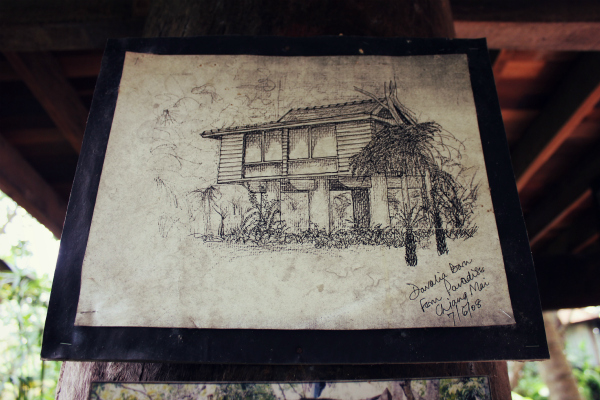
Niwat smiles, a spark growing in his eyes. “My dream, right now, is to go to the Congo – just live in the jungle, and take photos of the birds.” He grows animated, mimes holding a camera, and laughs, “That would be amazing, don’t you think?”
I do. His enthusiasm for life is brimming over, infectious. “I have many passions, because I love many things,” he continues. “I am an architect, and I never feel satisfied. I always have to use my imagination; I always have to come up with new ideas. I am a photographer. Right now, I am working on a huge project from the Tourism Ministry. I am taking photos of Lanna culture in Lampang, Lamphun, Chiang Rai, Phrae, Nan, Phrao and my home of Chiang Mai. I am very excited about this, because Lanna is a part of me, from my food, to my dress, to my behaviour.”
Perhaps it’s at this moment that I notice him differently. His calmness and generosity. His steady manner and way of speaking. His openness about love, and his appreciation for his life. “I am many things. A fern collector. Golfer. I sing, and play guitar. I love nature and culture, and I have this hope that everything I love will be protected. If the world is missing all these beautiful things, then it would just be a desert.”
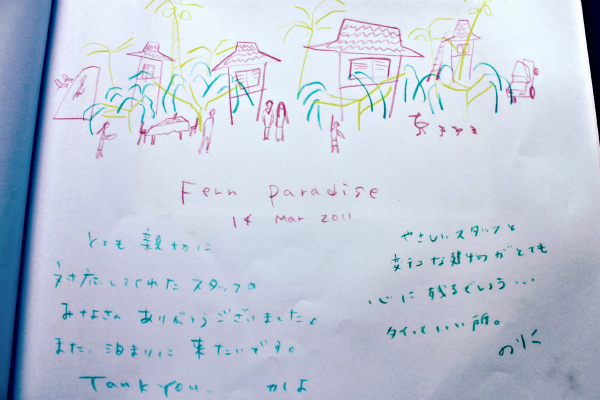
I’m a little bit sad to leave Niwat, and Fern Paradise. After paging through the guestbooks (they’re all on display, starting from way back when Fern Paradise first opened) I realise how many people have been touched by this place: families writing essay-long letters of gratitude for a weekend of relaxation; couples expressing their newfound fascination with ferns and fruit trees; children’s hand-drawn pictures of the surrounding plant life – beautiful illustrations from young minds influenced by the beauty of nature.
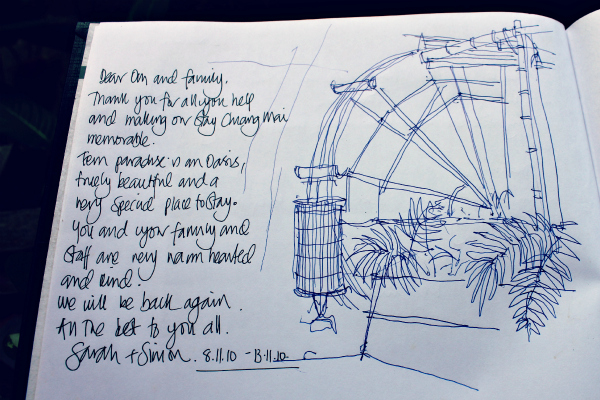
Outside, obvious wisps of Lanna culture still flow along the dusty roads of Sansai, where locals pedal slowly along on their bicycles, and smile at us without a moment’s hesitation. These people seem at peace, and gentler than the harried city-folk I’ve become accustomed to. I almost forget where I am for a moment, staring out at the rice fields, which are so intrinsically entwined in the old ways of the Kingdom. And then I hop on my motorbike, and drive home, where softly swaying ferns still seem to hang in my vision, beckoning me back to the comfort of nature.
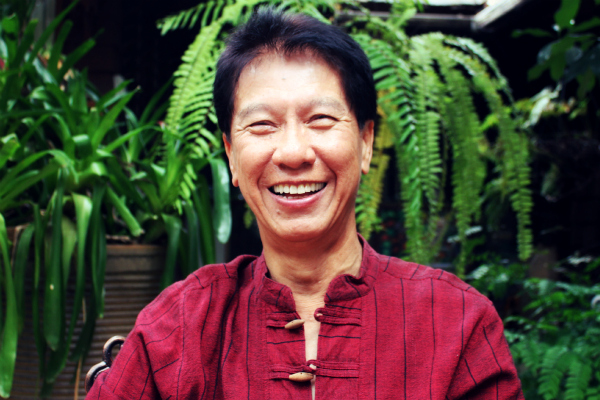 Dr. Niwat and his ferns.
Dr. Niwat and his ferns.
Go to the Fern Paradise Website to find more information and prices.
Adrian is a South African writer and photographer.
You can find more of her work at her blog Market of Eden.